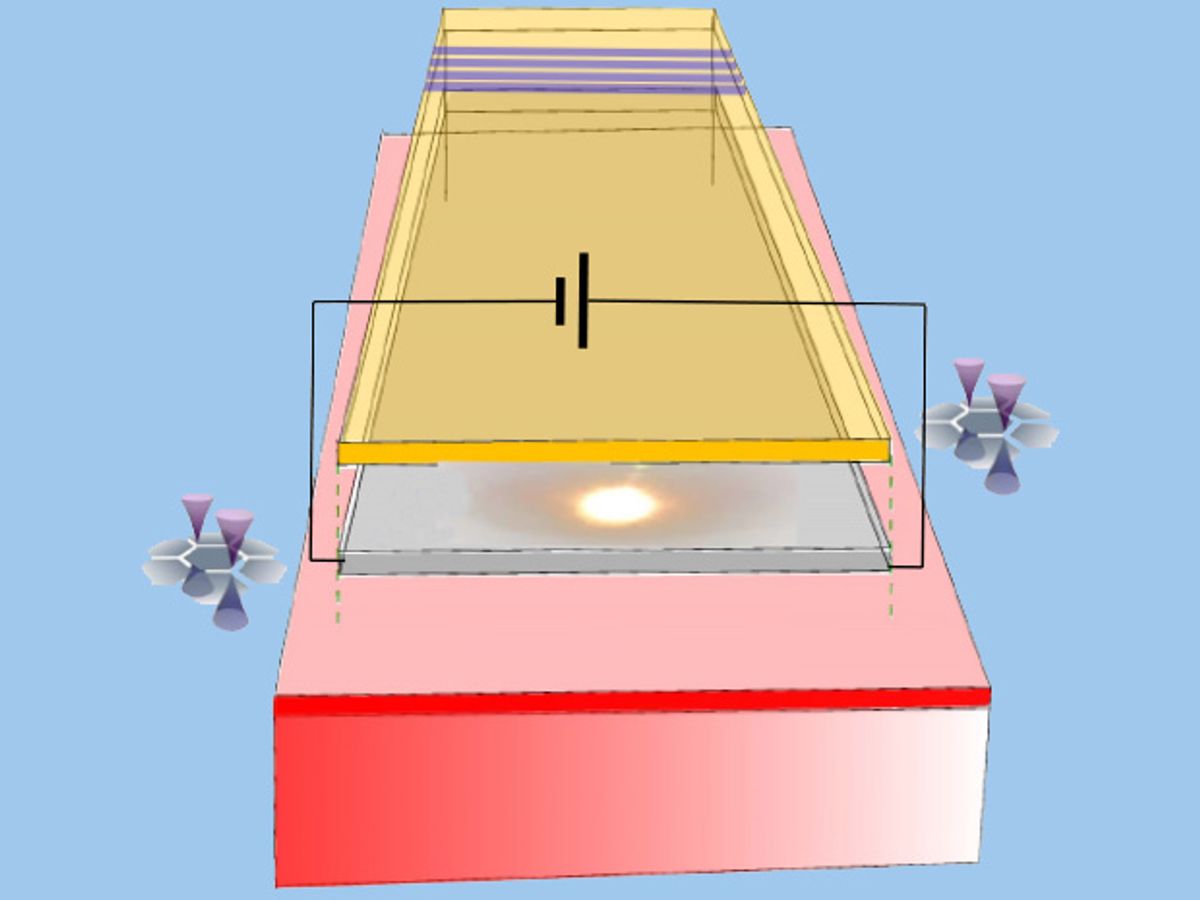Terahertz radiation is touted to open up many wondrous possibilities. T-ray technology could allow security officials to detect concealed weapons from a distance, provide accurate medical imaging, and allow high-speed wireless data communication.
One of the challenges in making the technology viable, though, has been developing a compact, efficient, and powerful terahertz source. The sources used today are bulky and costly. Some, such as quantum cascade lasers, require cryogenic temperatures.
A team of physicists now proposes a way to convert DC electric fields into terahertz radiation. They have come up with a seemingly simple nanoscale device—it relies on complex physics, mind you—that consists of a pair of two-dimensional material layers placed on top of a thicker conductor. When a DC electric current is passed through the conductor or the 2-D layer, the device should spontaneously emit terahertz radiation, the researchers say. They report the design this week in the Journal of Applied Physics.
Compared to most other THz sources, which only emit one frequency, the device could be tuned to emit different frequencies in the THz range, says Danhong Huang, a principal research physicist at the Air Force Research Lab in New Mexico. And while this is only a proposed design right now, Huang says that it should, in theory, be possible to make a THz emitter that is several millimeters to a few centimeters in size and emits milliwatts of power.
The 2-D layers could be sheets of any 2-D material like graphene or the more newly discovered cousins silicene or germanene. Graphene should be ideal because of its high conductivity, Huang says. The conductor, meanwhile, would be a semiconductor such as silicon or gallium arsenide that is doped to make it more conducting. The higher the doping, and hence the conductivity of the conductor, the higher the frequency of the output radiation. Using a metal conductor, for instance, would give high-frequency infrared radiation.
The device’s underlying mechanism is surface plasmon resonance: the collective oscillations of conducting electrons. The DC field causes plasmon resonance at the thick conductor’s surface and at the interface between the two 2-D layers. The two plasmons couple together and cause an instability in the oscillations, which induces the emission of THz radiation. Terahertz waves range in frequency from 300GHz–3 THz, corresponding to wavelengths between 1 mm to 0.1 mm.
By adjusting parameters such as the density of conduction electrons in the material or the strength of the DC electric field, it should be possible to tune the frequency of the resulting terahertz radiation. The device should have a very wide frequency tuning range from the higher microwave—microwave radiation ranges from 300MHz–300GHz—up into the lower THz, Huang says. Making a source that emits higher THz frequencies is challenging because it requires very high voltages that can cause the material to break down.
The group is now working with experimental researchers to design a prototype THz emitter. The challenge will be to find or develop the best materials and the optimal combination of 2-D layers and a compatible conductor substrate on which the 2D layer can be grown or deposited, Huang says.
Prachi Patel is a freelance journalist based in Pittsburgh. She writes about energy, biotechnology, materials science, nanotechnology, and computing.



